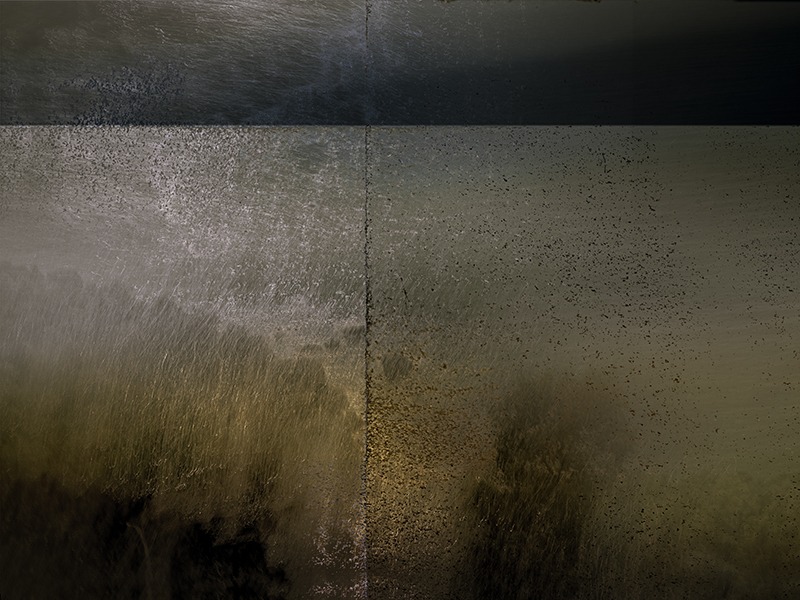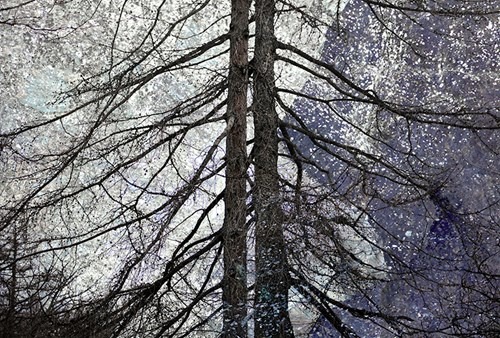All images © Valda Bailey
Ahead of her talk at Foto Fest South this September, photographer Valda Bailey talks about the processes she goes through to create her images, from finding the right location through to printing them out.
On first picking up a camera…
“I went to evening classes when I was a young teenager to learn about the basics of photography. I was pretty hooked for several years, got involved in developing and printing etc and really enjoyed the process. After a few years, life sort of got in the way and I largely put photographic endeavours aside for a couple of decades. I started taking a few snaps again when digital cameras first arrived. My interest gradually snowballed as I found it to be a very satisfying way to channel my creative energies.”
On learning from those first images…
“I started on Flickr making some very pedestrian and unoriginal work – flowers, puppies, still life etc. Before long I realised that what I was doing had little to do with creativity and far more to do with mirroring what was in front of me. It also occurred to me that what I was doing had been done a million times before. Although the images I was making were staggeringly uninspiring, I learned an awful lot about image making during the first couple of years.”
On finding your style…
“I decided that the only viable way I could make images that were unique and not easily replicated was to get out onto the street in search of ‘the decisive moment’. Long story short, I pursued this approach for some time before realising that – amongst other things – my personality wasn’t really cut out for it.
A lightbulb moment occurred when I came across an image made by Chris Friel in a magazine. It was little more than a few blocks of colour depicting a landscape, but it stopped me in my tracks. At the time I had no idea that a camera (with intentional camera movement) could produce such an image.
It was absolutely pivotal – I set about researching ICM, Chris Friel, and as many other practitioners of this way of shooting as I could find. That was the start of the journey that led me to make the images I do today. Chris remains one of my photographic heroes – I am constantly inspired by and in awe of his creative genius and I owe him a huge debt of gratitude.”
On choosing a subject…
“It’s a tough one… These days, I’m far less concerned about what it is I am photographing whether it be landscape, seascapes, trees, still life etc., and more interested in depicting an idea, an emotion, or trying to interpret something that has touched me. I am fairly obsessed by colour, so that is a determining factor. I love being out in the landscape so anything that I find there can inspire me.”
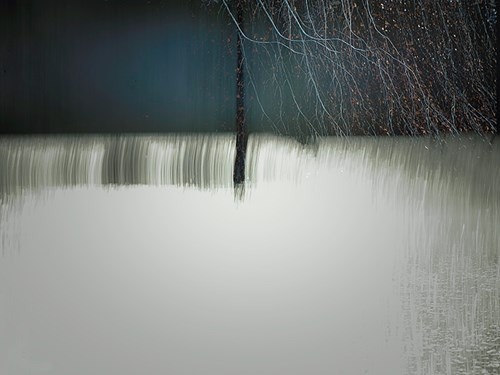
On landscape photography…
“I’m not sure the landscape is any different to, say, cityscapes, street photography or a still lifes, in that they can all be interpreted in many different ways. Like many photographers, I am fairly solitary and introverted, so for me the landscape is the perfect place to pursue my creativity. If I was more gregarious and outgoing, it may well be that I would choose to spend my time in an urban environment. One definite advantage the landscape has over the city is the fact that generally it doesn’t move too much. There are so many variables with the way I shoot – if you have to factor in a crowd of moving people as well, success becomes much more difficult.”
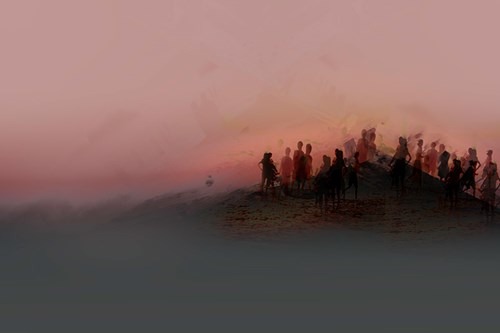
On scouting for a location…
“I don’t look for anything specific. I wait for something to take my interest – an idea to filter through – and then I set to work. I think my photography is more about my imagination so I am really only constrained by the ideas in my head. Walking around or sitting quietly in a location is the best way I know to help generate those ideas. It could certainly convincingly be argued that I spend far too much time gazing vacantly into the middle distance thinking about what I am trying to do.
One of the significant aspects of the way I shoot is the fact that it doesn’t really rely on visiting honeypot locations or carefully researched beauty spots. I do believe it’s helpful to be familiar with a place in order to interpret it, but my time is limited so I have to manage my expectations accordingly. Like most people, my life is unmanageably busy and I have had to tailor my approach to shooting somewhat in recent years. Consequently, I spend far more time making images at my home than before – obviously a place that is extremely familiar to me. It may sound contrary, but I also think that it’s possible to capture something very fresh and exciting from a new, unfrequented location.”
On gear…
“I take as little as possible with me. I now realise that one of the reasons this way of making images feels so natural to me is because I don’t need to carry around a huge array of gadgets and accessories. I’m impatient and far more careless than I would like to be so I work better when I don’t have to start changing lenses, adding filters, grappling with tripods etc. I take my camera – a Canon 5D mk4 – and one lens, often a 70-300mm. As well as being the focal length that I prefer, it has the added advantage of being able to stop down to f/45 which generally obviates the need for ND filters.”
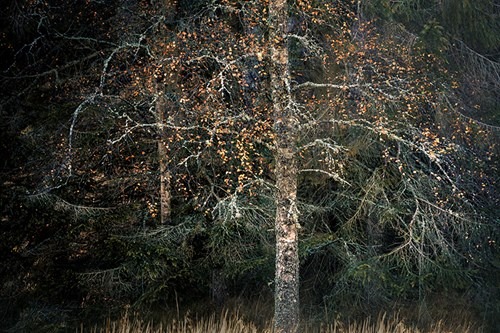
On editing…
“I spend far more time now on post production than I used to – combining images, playing with colour to try to create tension, sequencing images to go into a gallery, and looking for rhythm and balance. It’s a continuation of the stream of consciousness ramble that exemplifies the way I shoot.”
On the importance of printing…
“I think it’s vitally important to print. We spend most of our times behind a camera, in front of a computer, brandishing a mobile phone – moving pixels around in cyberspace. And that’s all great fun and creatively exciting, but at the end of that process, I really want to have something tangible to show for it.”
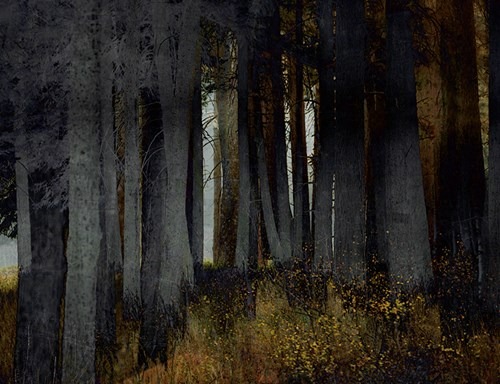
On preparing for a print…
“The usual rules of sharpness and histograms don’t really apply to my work. Exposure and sharpness (or lack of) are creative decisions based on what I am trying to say with my work.
I recently switched my allegiance from Epson to Canon and the amount of work I need to do to produce an image as close to what I see on my backlit screen as possible is almost negligible. It’s been an absolute revelation. The ICC profiles that came with the Canon were extremely good, however I have now had personal profiles made by the good people at Fotospeed and the times I need to hard proof an image have been drastically reduced.
The most important factor is ensuring my monitor isn’t too bright. I calibrate it, but not as often as I should. I also restrict the number of different papers I use and so have really had a chance to get to know their special qualities. When I first started printing, I gathered sample packs from all the big names and ended up with about 20 different boxes of paper. Obviously there was no chance of getting to know the characteristics of any given paper. Right now I’m using Fotospeed’s Cotton Etching 305, which is a joy to print on.”
On what’s next…
“I’m trying to create some order in my Lightroom catalog – hoovering out all the cobwebby old images that don’t deserve to see the light of day. Unlike many creative people, I need order and tidiness around me – must be my inner Virgo. As well as my usual workshops and speaking engagements – including Foto Fest in September – I have a project I am working on. It’s an extension of the work I showed at the Oxo Gallery in April, incorporating a little gold leaf and patinated metal, but in a lighter, subtler way. The images were made in my garden. I am hoping to have a couple of months free this summer to push forward with the ideas I have and – with luck – steer the project in the right direction.”
Don’t miss Valda Bailey’s talk ‘Photographic Impressionism’ at Foto Fest South, The University of Bath on 9th September 2018 at 10am. Click here for more details.
The competition is now closed

